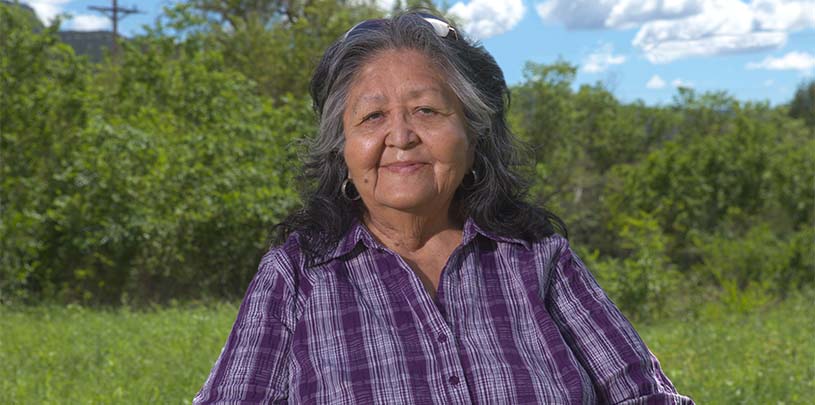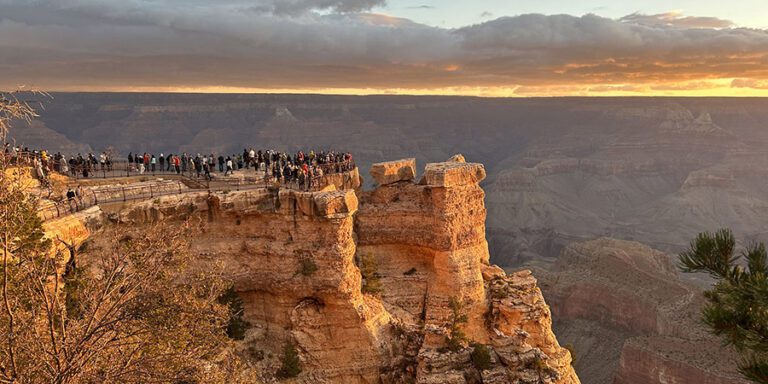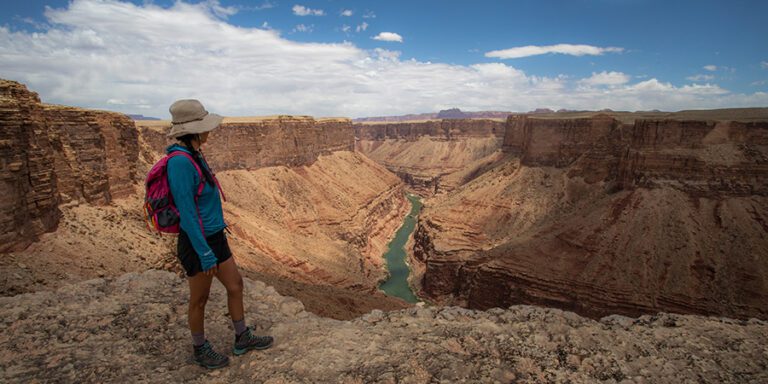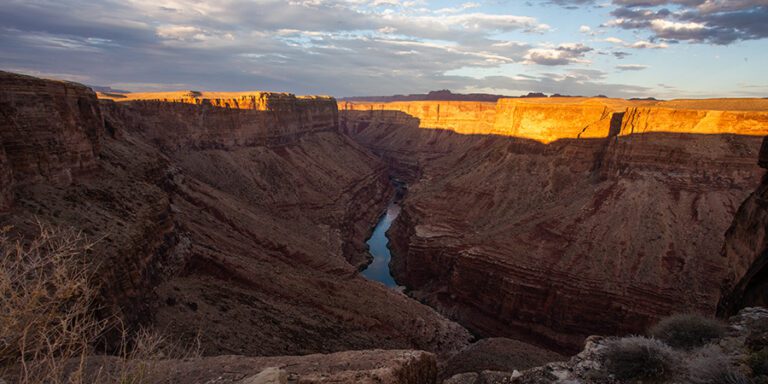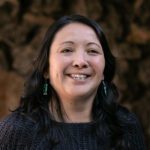
Ramon and Bernadette, White Mountain Apache tribal members, trace the Little Colorado River’s headwaters to their sacred mountain.
The Little Colorado River is best known for brilliant turquoise waters that cascade through its lower gorge, but 340 miles upstream, the Little Colorado River starts as a babbling mountain creek flowing through alpine meadows and aspen stands.
The headwaters of the Little Colorado River start on the White Mountain Apache Tribe’s ancestral lands, which people today refer to as the White Mountains in Arizona.
“Our sacred mountain to the east is called Ba’ishzhine Dzil in Apache, ‘the Black Mountain,’ because that’s where we collected beads that we use for our ceremonies,” says Ramon Riley, a White Mountain Apache tribal elder and spiritual leader. “But when the army came, they named it ‘White Mountain’ because they saw snow on it.”
Ba’ishzhine Dzil was renamed several times, first by conquistadors, then government land surveyors. Today, it’s widely known as Mount Baldy. Topping out at 11,421 feet, it’s the second tallest mountain in the state. Two small creeks trickle down its eastern flank. The West and East forks come together at the base of the mountain, and the Little Colorado River flows north from there, through Springerville, Holbrook, Winslow, Leupp, Cameron, and eventually spills into the Grand Canyon.
“I view and respect the Little Colorado River. Its source is from our lands, from below our sacred mountain that is respected as a place of holiness,” says Bernadette Adley-SantaMaria, a White Mountain Apache language and culture consultant and cultural advisory board member.
Adley-SantaMaria learned about the Little Colorado River from her grandmother as a creation story, along with the meaning of water as one of the sacred elements. Water, she says, is one of the bases of White Mountain Apache culture and their lifeways.
“If you’re going to just talk about water, or just the Little Colorado River, it doesn’t make sense in Apache ways. When we talk about water, we talk about everything that’s connected with it,” says Adley-SantaMaria. “The land, the water, the people, the natural resources, the animals — everything, it’s all related.”
The Little Colorado River supports an incredible diversity of streamside habitats, from alpine, to grasslands, to deserts. Apache trout thrive in the clear, cool mountain waters, while endangered humpback chub spawn in the warm, cloudy water in the lower gorge. Throughout its length, the Little Colorado River gives life to birds, deer, elk, bighorn sheep, chuckwallas, collard lizards, and more.
Riley adds: “It flows, and it gives water to the animals, all sorts of creepy crawlers, all sorts of wildlife, even human people. They all survive.”
Riley, who is the director for the White Mountain Apache Tribe Cultural Center, says that the Little Colorado River is an important source of medicinal plants.
“Our people went to the Little Colorado River to gather medicinal plants, to heal our people. And that river itself is a sacred, holy river.”
The tribe doesn’t utilize the Little Colorado River as much as it used to, says Riley, because it is now controlled by the Apache National Forest. Campgrounds, lakes, rivers, and trails bring loads of tourists to the region, who often aren’t aware of reservation boundaries. The summit of Mount Baldy, for example, is on White Mountain Apache land and is closed to non-tribal members. Adley-SantaMaria says that doesn’t stop hikers from summiting the peak. She has found comments on trail websites from people who disregard the boundary line.
“Nobody besides tribal members are supposed to go up there, but apparently they do anyways,” she says. “My grandmother told us that when you go to the sacred mountain, you go there to pray. In the old days, elders used to take their shoes off before they got to the top. That’s respectful.”
Adley-SantaMaria has never been to the top of the sacred mountain, but she wants to hike up there someday to pray. She says she’d need to practice her walking.
“That’s a wish I have. If older ladies like me with white hair have done it, I guess I could to.”
Hear more from Bernadette and Ramon in “Lifeways of the Little Colorado River”

